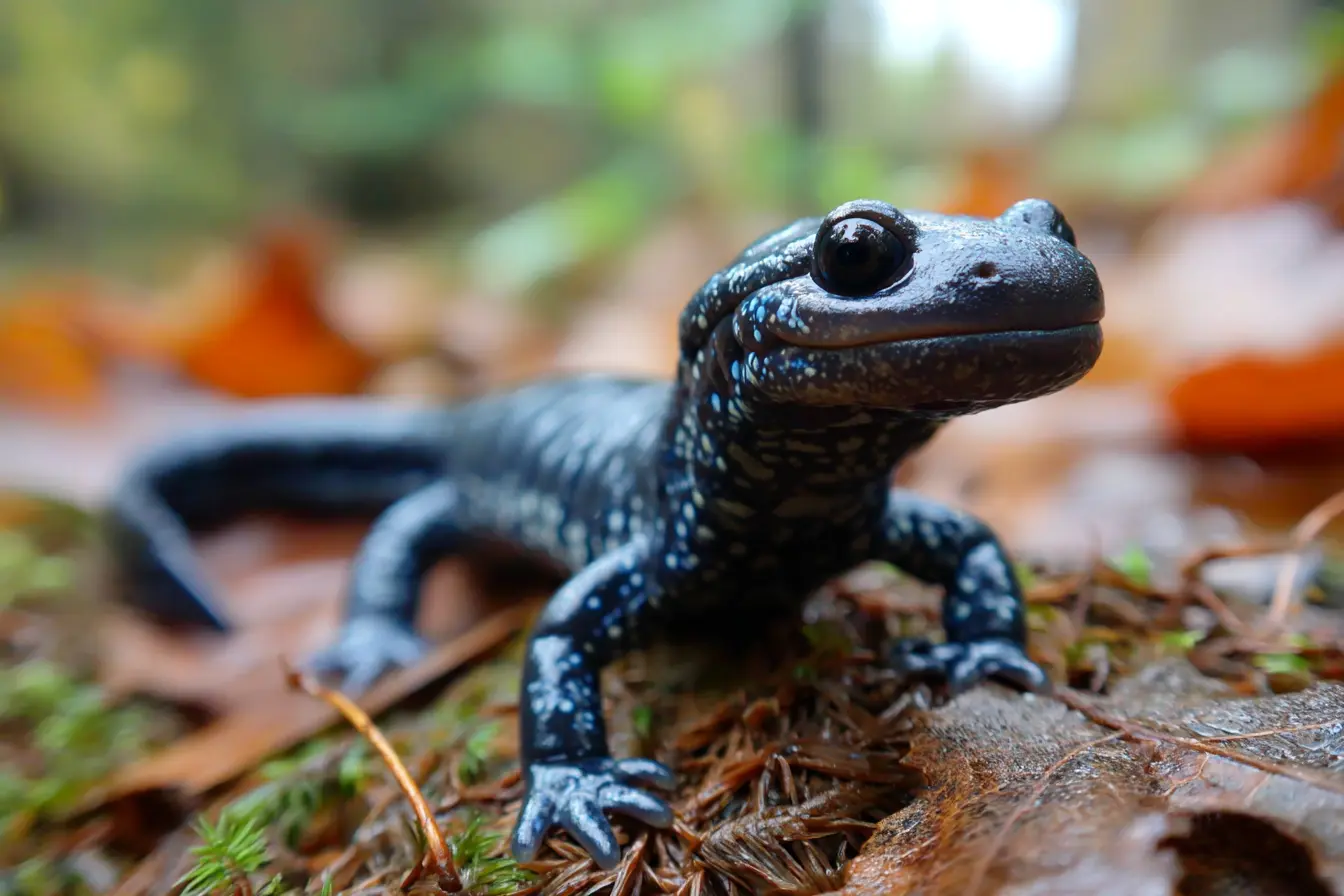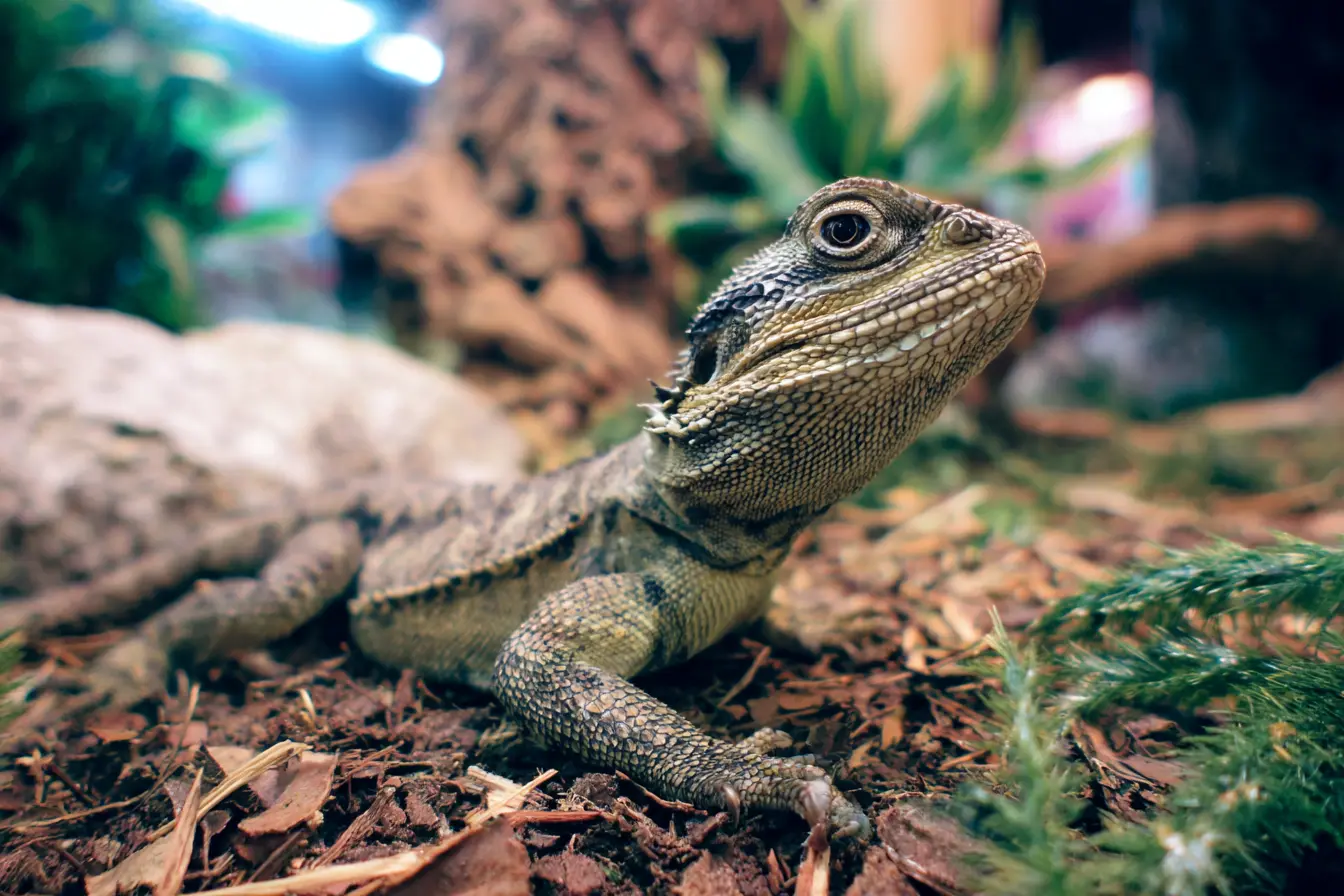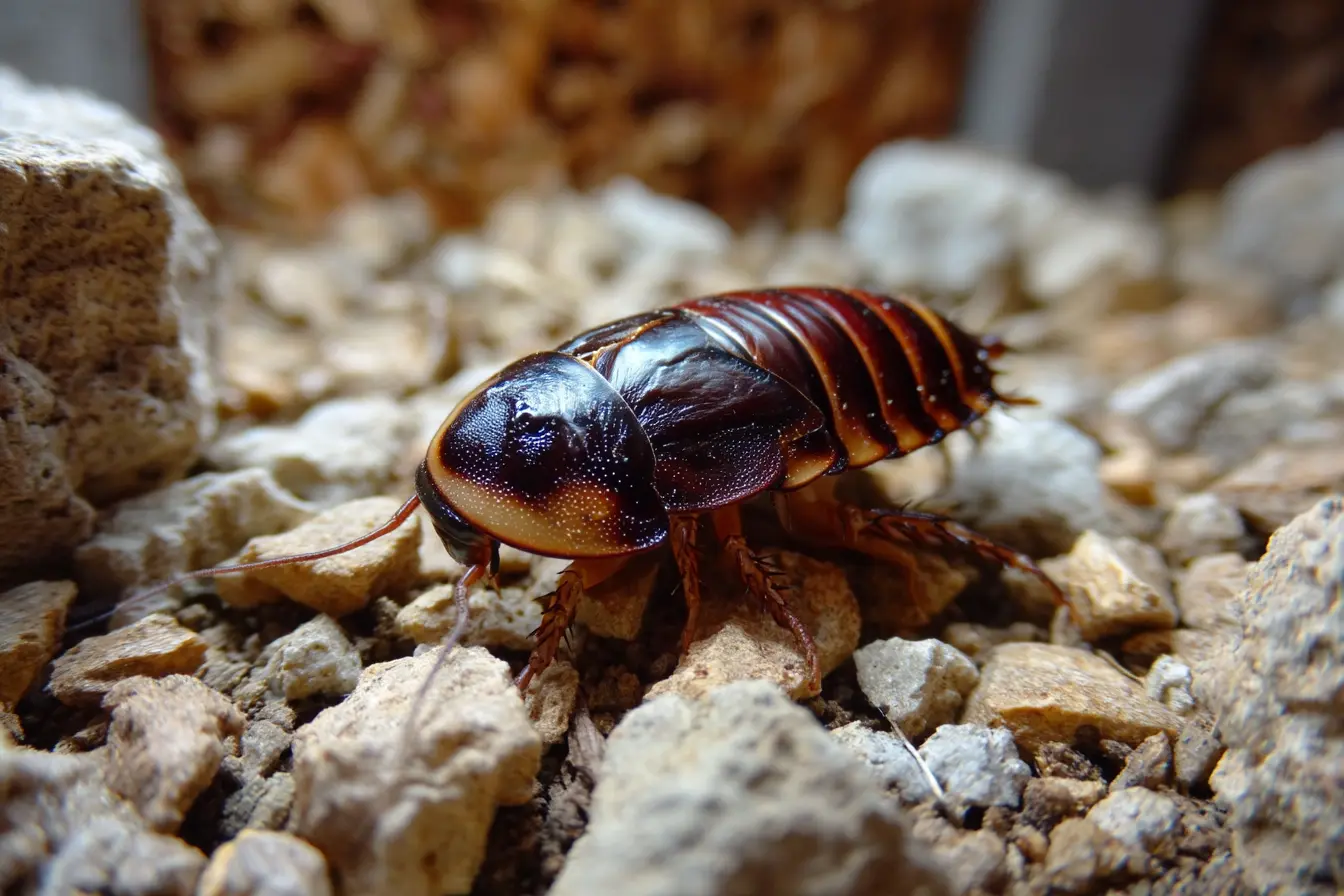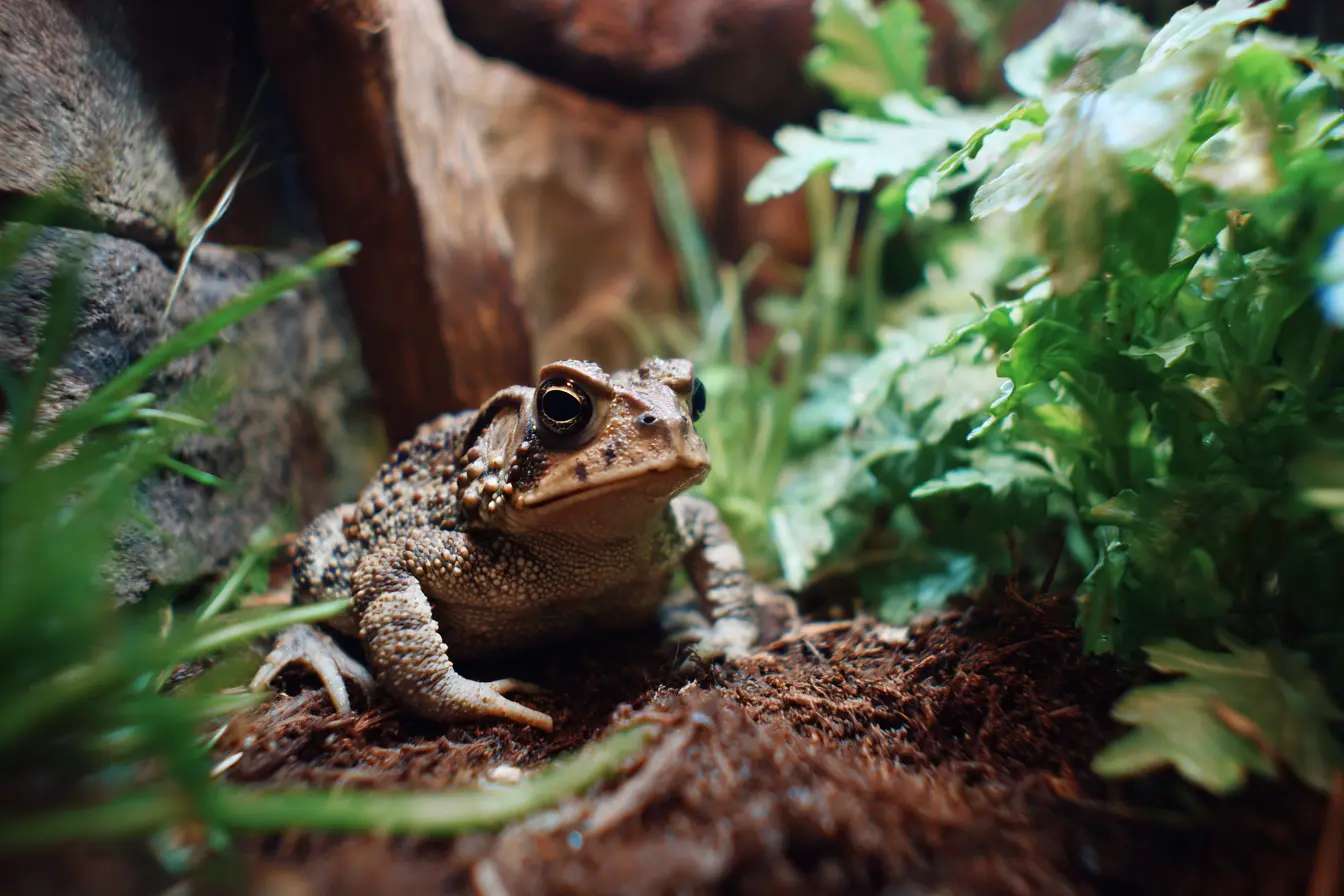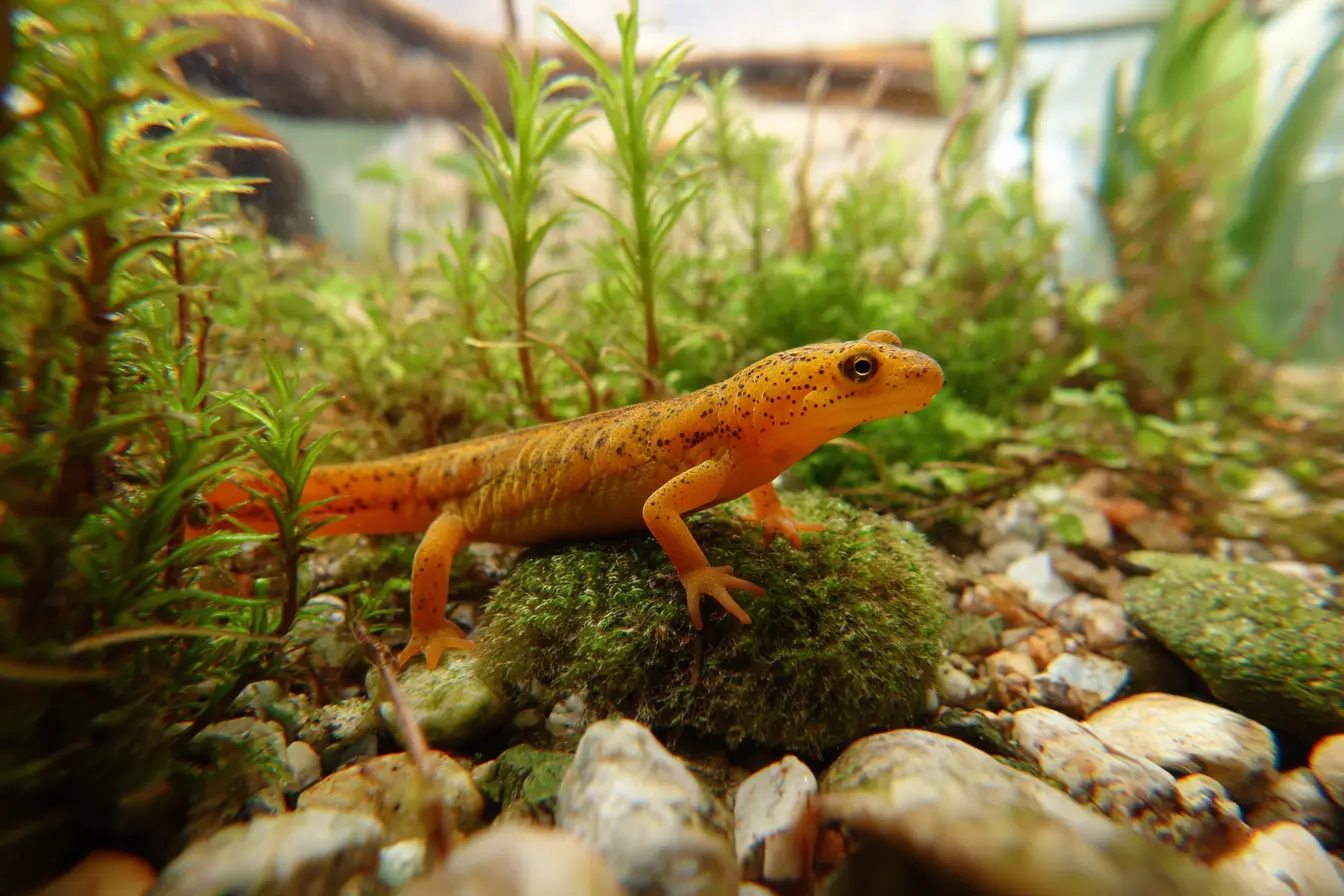
Keeping the Eastern Newt
The Eastern newt (Notophthalmus viridescens) is a captivating amphibian species native to eastern North America. Known for its fascinating life cycle, including a brightly coloured terrestrial juvenile phase called the "red eft," and its adaptability to both aquatic and terrestrial environments, the Eastern newt offers an engaging pet experience for amphibian enthusiasts.
This guide will provide everything you need to know to successfully care for the Eastern newt in captivity, covering its unique biology, housing, diet, and health care.
Physical Characteristics
Size
- Adults grow to 7–12 cm (2.75–5 inches) in length, with females generally being slightly larger than males.
Lifespan
- With proper care, Eastern newts can live between 10 and 15 years in captivity.
Colouration and Appearance
- Eft Stage (Juvenile): Bright orange or red with black-bordered red spots along the back. The skin is rough and granular.
- Adult Stage (Aquatic): Olive-green back with a yellow belly and red or orange spots. Skin becomes smooth, and a tail fin develops to aid swimming.
- Males exhibit a swollen cloaca and enlarged tail fins during the breeding season.
Sexual Dimorphism
- Males tend to have a broader, more paddle-shaped tail and darker toe tips during breeding season.
- Females are more robust with a rounder body.
Natural History
Eastern newts have a complex life cycle with three stages:
- Aquatic Larvae: Hatch in water and grow for several months.
- Red Eft: A terrestrial juvenile phase lasting 2–3 years where they venture onto land.
- Aquatic Adult: Return to water as adults, where they remain semi-aquatic for the rest of their lives.
This fascinating transformation makes them particularly interesting to observe.
Legal and Ethical Considerations
Always purchase captive-bred individuals from reputable breeders, as wild populations are sensitive to habitat loss and disease threats like chytrid fungus.
Housing and Enclosure Setup
Due to their life cycle stages, Eastern newts may require both terrestrial and aquatic environments. Most captive newts are kept in the aquatic adult stage.
Tank Size
- A 40-litre (10-gallon) tank is suitable for one or two adult newts.
- A 75-litre (20-gallon) or larger tank is recommended for groups or more elaborate aquascapes.
Aquatic Setup
- Eastern newts thrive in shallow, calm water environments.
- Water depth of 15–25 cm (6–10 inches) is ideal.
- Provide areas of both open swimming space and submerged hides (rocks, driftwood, aquatic plants).
- Include a small land area or floating platform where they can rest if desired.
Substrate
- Bare-bottom tanks are easy to clean.
- Sand or fine gravel can be used with caution to avoid accidental ingestion.
- Live aquatic plants like java moss, anubias, or hornwort thrive in Eastern newt setups and offer natural enrichment.
Filtration and Water Quality
- Use a gentle filter such as a sponge filter or a low-flow internal filter.
- Perform weekly water changes (25–50%) to maintain quality.
- Water parameters:
- Temperature: 18–22°C (64–72°F)
- pH: 6.5–7.5
- Ammonia/Nitrite: 0 ppm
Lighting
- Eastern newts do not require UVB lighting but benefit from a natural day-night cycle using ambient or LED light.
- Low-intensity lighting also supports plant growth.
Terrestrial (Eft Stage) Setup
- If housing efts, use a damp terrestrial setup with a secure lid.
- Moist soil substrate with leaf litter, moss, and bark for hiding.
- Shallow water dish for hydration.
- Humidity: 70–80% with daily misting.
Diet and Feeding
Eastern newts are carnivorous and have a healthy appetite.
Suitable Food Items
- Earthworms (small segments)
- Bloodworms (frozen or live)
- Daphnia
- Brine shrimp
- Blackworms
- Chopped nightcrawlers
- Small crickets or fruit flies (for efts)
Feeding Schedule
- Adults: Feed 3–4 times per week.
- Efts: Feed every 1–2 days due to higher energy demands during growth.
Supplements
- Aquatic newts often do not require supplementation if fed a varied diet, but occasional dusting of terrestrial prey for efts is recommended.
- Vitamin and calcium supplementation once every 1–2 weeks helps prevent deficiencies.
Behaviour and Temperament
Eastern newts are active, curious, and relatively social compared to other amphibians.
Typical Behaviour
- Adults enjoy exploring both the substrate and open water, resting on plants and hides.
- Efts are more secretive but will actively forage during dusk and dawn.
- Males may engage in courtship displays during breeding season, nudging females and exhibiting tail-fanning.
Handling
- Handling should be avoided. Newts have sensitive, permeable skin that absorbs oils and chemicals.
- Observation is encouraged, with minimal direct interaction.
Health and Common Issues
Eastern newts are hardy, but proper care is essential to prevent illness.
Common Health Problems
- Skin infections (fungal or bacterial), especially in dirty water.
- Parasites, more common in wild-caught individuals.
- Bloating or impaction from swallowing substrate or improper diet.
- Poor appetite or lethargy from incorrect water temperature or stress.
Preventative Care
- Regular water changes and tank cleaning.
- Quarantine new additions.
- Monitor temperature and humidity closely.
- Provide varied, high-quality nutrition.
Breeding Eastern Newts
Breeding Eastern newts in captivity is achievable with proper seasonal cues.
Breeding Setup
- Lower water temperatures during winter months (10–15°C or 50–59°F).
- Gradually increase temperature and light cycle in spring to trigger breeding behaviour.
- Males will court females with tail fanning and nudging.
- Females lay individual eggs attached to aquatic plants or surfaces.
Rearing Larvae
- Separate eggs into a nursery tank.
- Larvae hatch in 2–3 weeks and feed on live foods like daphnia and baby brine shrimp.
- Gradual metamorphosis into efts occurs within 2–4 months.
Conclusion
Eastern newts are beautiful, hardy, and captivating amphibians with a fascinating life cycle. Their manageable size, entertaining behaviours, and unique transformations make them ideal for amphibian enthusiasts who enjoy a more naturalistic, aquatic setup.
By providing clean, cool water, a balanced diet, and a stimulating environment, Eastern newts can thrive in captivity for many years. Whether you're drawn to their vibrant juvenile stage or the graceful swimming of adults, the Eastern newt offers a rewarding and educational pet experience.
Vets near you
Speciality vets
- Aquatics vet specialists
- Birds vet specialists
- Camelids vet specialists
- Cats vet specialists
- Cattle vet specialists
- Deer vet specialists
- Dogs vet specialists
- Equines vet specialists
- Exotic vet specialists
- Goats vet specialists
- Pigs vet specialists
- Poultry vet specialists
- Sheep vet specialists
- Small Mammals vet specialists
- Wild vet specialists
